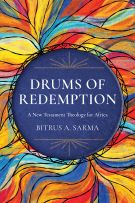| ISBN: | 9781783689095 |
|---|---|
| Imprint: | Langham Academic |
| Format: | Paperback |
| Dimensions (mm): | 229 x 152 x 14 |
| Publication Date: | 31/03/2015 |
| Pages: | 254 |
| Series: | Studies in New Testament |
| Language: | English |

Hermeneutics of Mission in Matthew
Israel and the Nations in the Interpretative Framework of Matthew’s Gospel
The Gospel of Matthew is pivotal in scholarly discussion on the hermeneutical use ofthe Old Testament in the New. In this publication Bitrus Sarma proposes that Matthewutilizes the Old Testament as a book of promise of God’s salvific plan and that Jesus is thefulfillment of that promise. For Matthew, God’s purpose to save fallen humanity is thegrand narrative of the Bible. Using promise-fulfillment as the interpretative frameworkfor mission theology, Sarma explores redemptive events and institutions, geography,prophetic ministry, and intertextual typology.
Endorsements
This volume is a monumental work. The topic is of immense importance, and one that has not received nearly the attention it deserves. . . Having taught and written on Matthew’s Gospel for over 30 years, I myself learned a great deal from this work.
David R. Bauer, PhD
Ralph Waldo Beeson Professor of Inductive Biblical Studies,
Dean of the School of Biblical Interpretation,
Asbury Theological Seminary
Bitrus A. Sarma’s work offers a unique and persuasive missional reading of Matthew’s Gospel, and particularly Matthew’s use of the Old Testament from the perspective of missions. Matthew’s view of missions is to be found in Israel’s faith traditions, and it is developed in the Gospel under the framework of promise and fulfillment. This well-researched book has significant implications, from Matthew’s perspective, for how one should read the Old Testament. Highly recommended.
David E. Garland
Professor of Christian Scriptures,
George W. Truett Theological Seminary,
Baylor University
Few studies see the New Testament’s use of the Old Testament beyond both the mere formal citing of texts and the ideology and theology motivating such exercise by New Testament authors. Fewer still go on to establish an overarching interpretive framework for understanding how NT authors use the OT—or, better still, how the OT shapes major segments and central issues within their works. Dr Bitrus Sarma’s new work eloquently succeeds in these areas and more.
Randee I-Morphé
Chair, PhD Committee
ECWA Theological Seminary Jos, Nigeria
Director, Hokma House, Centre for Biblical Research, Nigeria
Table of Contents
- Abstract
- Acknowledgements
- Abbreviations
- Chapter 1
- Introduction
- 1.1 Purpose and Direction of the Study
- 1.2 Contribution of the Study
- 1.3 Methodology and Procedure of the Study
- Chapter 2
- Mission in Matthew: The Role of the Triune God
- 2.1 Introduction
- 2.2 The Father’s Redemptive Role in Mission
- 2.3 The Son’s Redemptive Role in Mission
- 2.4 The Holy Spirit’s Redemptive Role in Mission
- 2.5 Summary and Conclusion
- Chapter 3
- Mission to Israel: Foundations and Framework
- 3.1 Introduction
- 3.2 Redemptive Events, Institutions, and Mission
- 3.3 Prophetic Ministry and Mission
- 3.4 Geography and Mission
- 3.5 Intertextual Typology and Mission
- 3.6 Summary and Conclusion
- Chapter 4
- Mission to the Nations: Foundations and Framework
- 4.1 Introduction
- 4.2 Redemptive Events, Institutions, and Mission
- 4.3 Prophetic Ministry and Mission
- 4.4 Geography and Mission
- 4.5 Intertextual Typology and Mission
- 4.6 Summary and Conclusion
- Chapter 5
- Conclusions and Recommendations
- 5.1 Conclusions
- 5.2 Recommendations
- Bibliography






